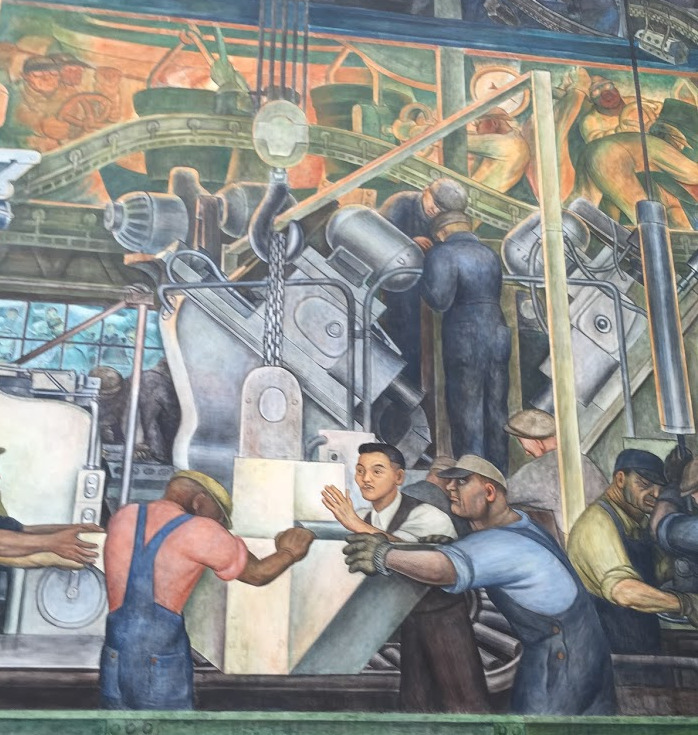In honor of Asian American and Pacific Islander Heritage Month, we are presenting the following except showcasing the story of some of the trailblazing Asian Americans in the auto industry.
Published 5.31.2021
Legacy Keeping and Memory Keepers
by Victor Jew
Reprinted from Victor Jew's Introduction to 'Part II: Legacy Keeping and Memory Keepers' from Asian Americans in Michigan: Voices from the Midwest edited by Sook Wilkinson and Victor Jew. Copyright (c) 2015 Wayne State University Press. Used with permission from the author." You can learn more about the book at www.wsupress.wayne.edu/books/detail/asian-americans-michigan.
A resident of Michigan since the 1940s, Toshiko Shimoura has a lot to remember. The story of her life is a transcript of how large-scale events shaped lives, both her own and those of many Asian Americans during the Second World War and after. Shimoura was not born in Michigan. She grew up near the San Francisco Bay area of northern California and, had events transpired differently in the winter of 1942, she may have stayed there for the rest of her life. Before February 1942, she had never thought of moving to the Midwest or spending the rest of her life in Detroit. But in the wake of the U.S. entry into the Second World War after the Imperial Japanese Navy attacked Pearl Harbor on December 7, 1941, she and more than one hundred thousand other Americans of Japanese descent found themselves forcibly moved from their homes on the West Coast. Starting in February 1942 and continuing through the spring and summer of that year, those one hundred thousand West Coast Japanese Americans moved and moved again as decisions mandating their removal were made through executive orders from the White House enabling legislation by Congress and military decisions from the U.S. Army’s Western Defense Command.
Shimoura did not move directly to Michigan from her home in Fremont, California. First she was moved to the Army’s Assembly Center, then she was transferred to the War Relocation Authority’s Central Utah Project, known otherwise as Topaz, “the jewel of the desert.” At the Central Utah Project she heard about the War Relocation Authority’s program to permit incarcerated college students to finish their educations at schools in the Midwest, the East Coast, and the South. Taking advantage of that student leave program, she went to Michigan State College, thus starting her path to becoming a public health microbiologist.
History changed Shimoura’s life dramatically, but the written and published history of Asian America in Michigan (and the Midwest) has always been lacking. For people like Shimoura, it was important to preserve history through memories, stories, and passed-on knowledge. That is why part 2 groups Shimoura’s contribution and seven others under the rubric of memory keepers and legacy keeping. The eight contributions in part 2 tell various kinds of history, but they do so primarily in the form of memories passed on as local knowledge. These legacies had to be preserved because no one else in Detroit (or Lansing or Ann Arbor) was going to keep them alive.
At the time these legacies were written and submitted, Michigan had not created a public place for marking the Asian American presence in the state. With no permanent Asian American museum in Michigan as in other locales (Chicago has a Chinese American Museum in its Chinatown, Los Angeles is home to the Japanese American National Museum, and Seattle and New York have Asian American museums), the legacy keepers in part 2 are Michigan’s cultural resources for remembering its Asian Americans. There is no doubt that the memories in part 2 need to be studied by historians to contextualize them and to compare them with other sources, but that conversation begins here, with the publication of these essays. These memories—of pioneer Japanese midwesterners, of the first Korean Detroiter, who was superintendent of physical education at Condon Junior High School from 1918 to 1923, of the diversity of Asian Indians in Michigan—constitute a cultural lifeblood whose preservation is remarkable. In retrospect, it would have been as easy to obliterate these as it was to bulldoze Detroit’s old Chinatown in the early 1960s. The legacy keeping preserved and now shared here is a testament to the importance of keeping such remembrances “on the ground” as local knowledge.
I return to Toshiko Shimoura. Starting and ending this introductory essay with her life helps us see the power of making the kinds of connections that keep memories alive. In 1991, Toshiko Shimoura had a chance to complete that circuit of memory and history when the Los Angeles Times sent a reporter to Detroit to write about the city’s continuing struggle to adjust to Japanese automobile imports—and, by implication, its Japanese American residents. During Shimoura’s interview with the journalist, the two of them gazed at one of Detroit’s cultural treasures, Detroit Industry, the fresco mural painted by Diego Rivera in 1932 that adorns all four walls of a court in the Detroit Institute of Arts. Pointing to a figure on one of the murals (below), Shimoura remarked, “That’s Mr. Hirata. James Hirata. . . . He was a tool-and-die man.” Identifying the Asian face in Detroit Industry, she recalled what local Japanese American memory had long known, that Mr. James Hirata, the “tool-and-die” man, brought key hands-on engineering knowledge to the making of the B-29 bomber at the Willow Run Plant during the Second World War.

Such an act of keeping memory becomes richer yet when its implications are explored. Diego Rivera painted Mr. Hirata in 1932, meaning that “tooland-die man” was a member of the pioneer generation of Japanese Americans who ventured to the Midwest prior to the larger midwestern resettlements of Japanese Americans during the war years of 1942-46. That historical point makes James Hirata more than just the sole Asian face in Detroit Industry. And more connections are found when we consider details of Shimoura’s life. After she resettled in the Midwest, she married a Michigan man, James Shimoura. James Shimoura was a native Detroiter; his father, a “true automotive pioneer,” had traveled from Tokyo to Dearborn in 1911 to work for the Ford Motor Company. It would be that pioneer’s daughter-in-law, a native Californian, who would connect the two strands of Japanese American history in Michigan: the pioneers, as represented by the elder Shimoura, his son James, and James Hirata, and the resettlers who came to Detroit as a result of the war. Toshiko Shimoura’s life experience connected both strands, and when she recounted the local knowledge (treasured by Detroit’s Asian Americans) that the bespectacled figure in Detroit Industry had a name and a history, she bore that past forward. Toshiko Shimoura became the transmitter of that local memory—all she had to do was point and remember.
History and memory. Inextricably entwined, they operate in indispensable ways to keep cultural persistence and witness alive for individuals and communities.



